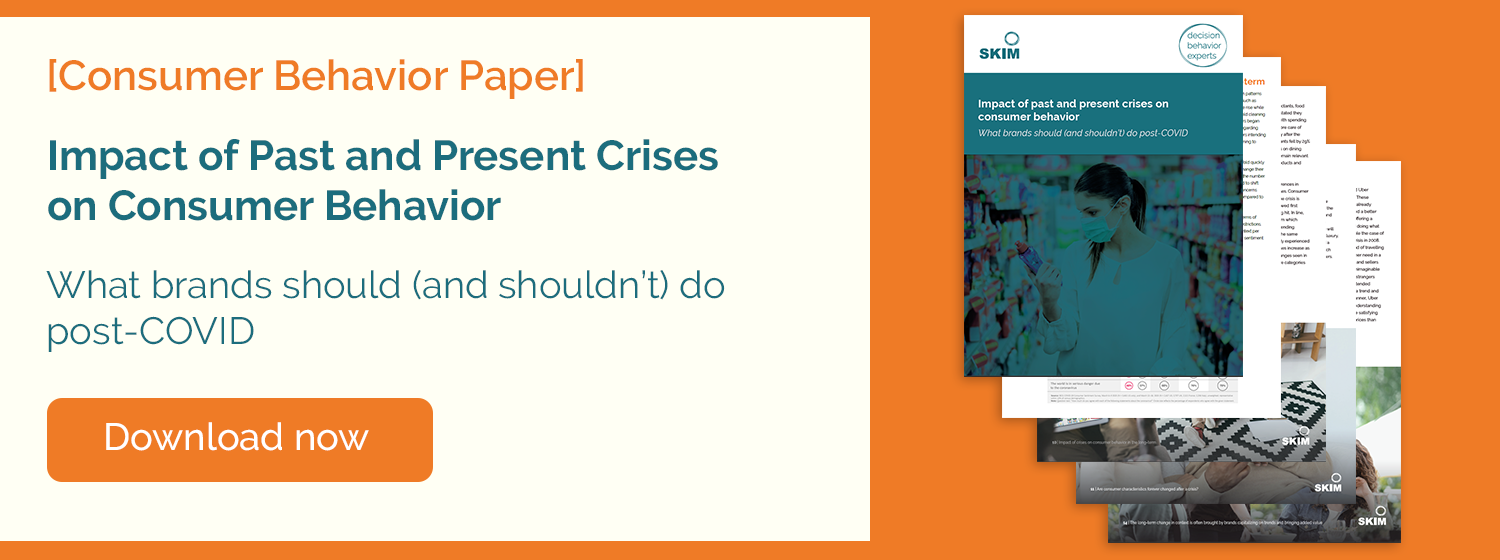How a new view on the purchase decision spectrum can drive better market research outcomes
I recently got in a taxi cab with a few colleagues and we were so engaged in conversation that we didn’t realize we weren’t moving until the driver asked: “So, where are you headed?” As heavy Uber customers, all of us were in the habit of not specifying a destination verbally since the app conveys all the pertinent details to the driver. We assumed that upon entering the car, the driver should know where to go!
On that taxi ride, we reflected how consumer behavior, and our habits, changed so drastically in a few short years thanks to new technology. Uber disrupted consumers’ traditional routine (hailing a taxi on the street) to form a new habit (grabbing your smartphone to “call” one). What started out as a deliberate new choice to use a rideshare app, quickly turned into an automatic, or habitual, behavior.
This scenario perfectly illustrates our view of the consumer decision behavior spectrum: The Habitual-Deliberate Decision Loop. Disruption of consumer behavior seems to be happening at a faster and more frequent pace than before. We introduce this loop to offer brands a new view on how to analyze, disrupt and reinforce your consumers’ decisions.
Habitual vs. Deliberate: A loop of consumer decision behavior
At one end of the consumer decision loop you have habitual behavior. Habits are automatic routines people go through that don’t involve much thinking or deliberation in tasks they perform. In the context of consumer purchase decisions, they’re usually what consumers want to buy, regardless of brand, price, advertising etc. For brands, the goal is to keep existing customers and acquire new ones.
On the other side of the decision loop we see deliberate behavior. Here consumers are making deliberate choices. They’re more conscious of the choices they make, and pay attention to external stimuli that address, or match, their underlying interests or needs.

While these are two extreme ‘ends’ of the decision behavior spectrum for a specific situation or need that a consumer is facing (e.g. calling a cab), it’s also important to consider the more macro level view of consumer habitual/deliberate decision behavior – from your company’s perspective.
That is, one of the most fundamental questions or challenges a business faces is: Are consumers in the habit of buying my products or services? If the answer to that question is yes, you want to understand how you can help reinforce that habit. If they’re not in the habit of purchasing your product, you want to understand how you can disrupt a “competitive habit” to make it more deliberate, i.e. you want to break the cycle of consumers continuing to purchase from competitors.
If you’re evaluating your consumers or your competitors’ consumers, you’ll see they generally fall into the following categories of purchase behaviors. :
- Habitual – Loyal to me and buys only from me
- Deliberate – Buys from me and my competitor(s)
- Habitual – Buys only from (i.e. is loyal to) my competitor(s)
- Habitual & Deliberate – Not buying from my category (i.e. isn’t aware that something is available in the market, or doesn’t think about it at all)
- Deliberate – Actively against buying from me (e.g. negative online reviews)
Breaking ‘bad’ habits and triggering new ones
Whether your customers are exhibiting habitual or deliberate behavior, market research insights are needed to reinforce and/or disrupt those decisions.
For example, for consumers that currently purchase your product or service, you may want to uncover what claims or visuals will better drive conversion at the shelf or online; or which marketing strategies will best reinforce, or reward, repeat purchases. And for those consumers that only buy from the competition, you may seek insights to determine which pricing promotion may disrupt that behavior and make them switch to your brand.
If you’re successful in that disruption, and your consumer is now purchasing your product, you want to reinforce that new habit, and keep them in the habitual loop. Here shopper insights can help determine the most successful marketing strategies to keep them purchasing and fend off any ‘disruptions’ from the competition.

As an example, consider the emergence of voice technology (e.g. digital assistants, smart speakers) and the potential of this new channel to help reinforce or disrupt consumer behavior, like purchase decisions. For example, if a consumer runs out of his favorite cereal, he can tell his voice assistant to order more. Both Alexa and Google Home (the latter in collaboration with Walmart) now offer an auto-order function that automatically re-purchases a given product. In our loop illustration, this action reinforces the consumer habit.
The holy grail is to create an automatic behavior (i.e. a habit) where the consumer is loyal to your brand and never considers purchasing from the competition.
Some habits are quickly formed, while others are hard to break. In the Habitual-Deliberate Loop cycle, you need to simultaneously reinforce habitual (“good”) behavior with rewards, while disrupting deliberate (“bad”) behavior by introducing triggers. Taking this view of consumer decision behavior will help drive better business outcomes, both short and long term.
Looping in a new approach to insights
We know as a brand you’re ultimately concerned with keeping your customers loyal, or tempting new customers to buy your product. Having a clear understanding of this Habitual-Deliberate Loop can help you prioritize short-term and long-term strategies and execution plans. This loop can also help guide your insights strategy, for example, where to best allocate research spend.
To stay ahead in today’s quickly evolving marketplace, you need a strong research partner who is expert in this decision cycle and can serve up accurate and actionable insights at all points in the loop.
Curious to learn how the Habitual-Deliberate loop can help optimize your market research strategy? Contact us today!


